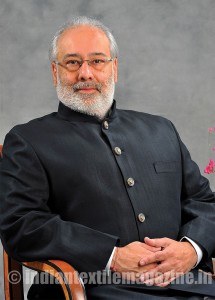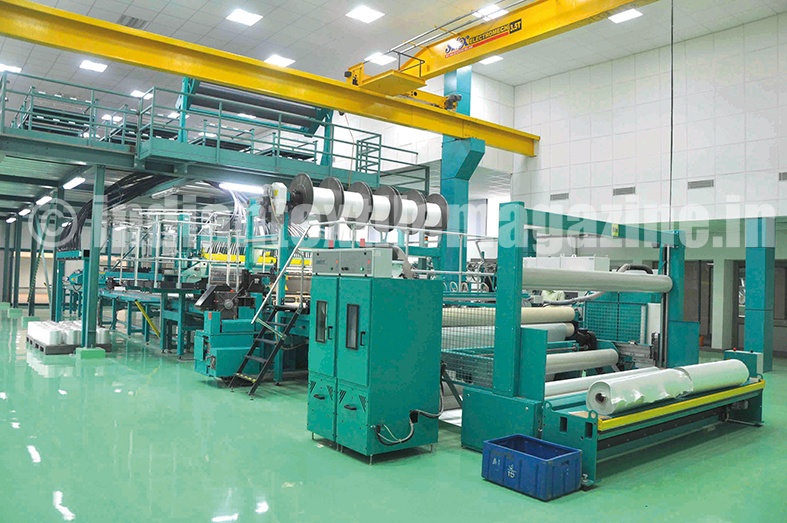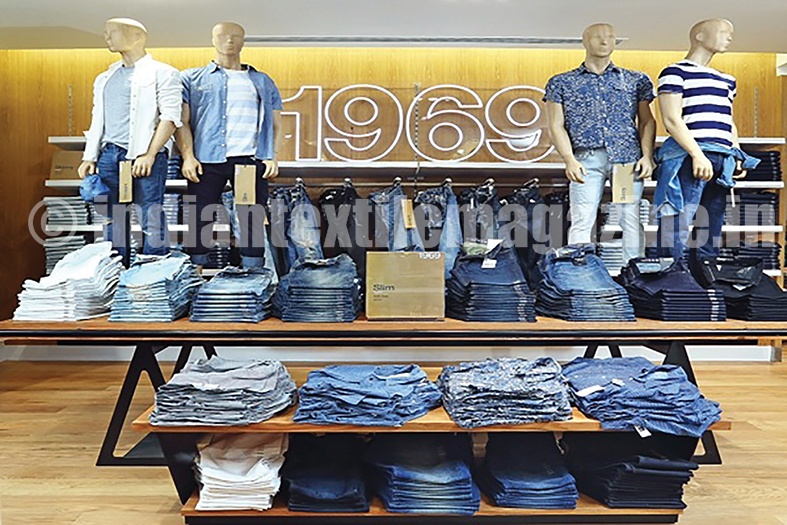Arvind Ltd.’s future is built on two parallel growth drivers – domestic consumption in apparel & branded retail as well as global opportunity in textiles and clothing world trade. The company is expected to grow around 15-16 per cent at a consolidated level in the next four-five years. It is expected that B2C business would constitute about 35 per cent of revenue and about 30 per cent of EBIDTA at the consolidated level.

In Brands & Retail Space, Arvind has had built a breakthrough growth portfolio of power brands and specialty retail. With such a strong portfolio of brands and retail format, Arvind is well poised to achieve CAGR of over 25 per cent in next four-five years. To achieve this goal, the company is making category extension of its existing brands and rapid expansion of its distribution footprint. Over the period, the company is planning to cover almost 300 cities with over three million square feet retail space.
In textiles, the company is making headway through asset-light garmenting business as part of its vertical integration strategy so as to capture the entire value in textile chain. Building garmenting factories in Ethopia will also enable the company to compete more vigorously in the international market.
Arvind is also expanding its knits fabrics capacities after having expanded the woven fabric capacity in recent times. The Textile Business is expected to continue to grow at eight-nine per cent. The company continues to build on to the Technical Textiles business and is constantly looking for newer opportunities for joint venture with global leaders in the line who either bring the technology or allow access to international customers. The recently launched online platform is the first major step forward in the company’s E-Commerce strategy.
Arvind is also looking to develop multiple ‘Differentiated Online Formats’ to play in the E-commerce space. On the whole the outlook for the company remains positive.
Garments, which is part of Arvind’s verticalisation strategy, continues to gather momentum. During the year, garments revenue registered 24 per cent growth.
Arvind manufactures jeans, shirts and knitted garments at its plants in and around Bangalore. Revenues from garments are likely to be higher in the current year with the expected stabilisation of operation at the new plant in Ethiopia. The joint venture company set up to manufacture suits, Arvind Goodhill Suit Manufacturing Private Ltd., has grown from Rs. 15 crores in 2015 to Rs. 49 crores in 2016.
Arvind Ltd. clocked revenues of Rs. 8,450.41 crores for 2016-17, registering growth of 7.63 per cent over the previous year. Operating profit stood at Rs. 1,065.14 crores, representing a growth of 5.16 per cent.
New technology intelligence added to infrastructure
As part of co-creation strategy new technology was added to Arvind Denim Lab. Washing machine and dryers from Yilmak (Turkey) were added to the lab. 3D machines from Metod (Turkey), brushing dummies from Fabcare and Curing ovens from Mectek (Italy) were also added.
To strengthen the Corduroy denim concept one more Corduroy cutting machine was added. The old technology of Dual Core spinning has been upgraded with more scientific controls to make high quality performance yarn. In the warping and dyeing area new a warping machine was added with upgraded technology and higher end capacity. In the finishing area new technology of Stable Foam coating was added to give high-end fashion products. A Goller made fabric preparatory machine was added to carry out preparatory process of outsourced grey fabric for Neo Technology. A new Sanforize machine from Monforts with double rubber cylinder added which runs at double the speed of a conventional machine.
A new dimension to denim was given with the addition of new concepts of Bi-stretch denim with Selvedge, Warp stretch men’s and women’s denims. Lathery denim made with stable foam coating, double cloth with backside checks and stripes, Indigo lock prints, Stay blue and stay black with reactive dyeing, bright shades with new dyes other than Indigo and Sulphur, knit weave products for top and bottom weights, new blends of Modal – Cotton, Wool – Cotton and Tencel – Cotton introduced to Denim Family.
High performing fibres like Dyneema, Cordura (Nylon 66) Filaments, Thermolite Infra-Red fiber technology was tested in denim. A break through innovation was done with recycling of used garments and cotton fiber extraction and reuse in ring spinning to make sustainable denim.



